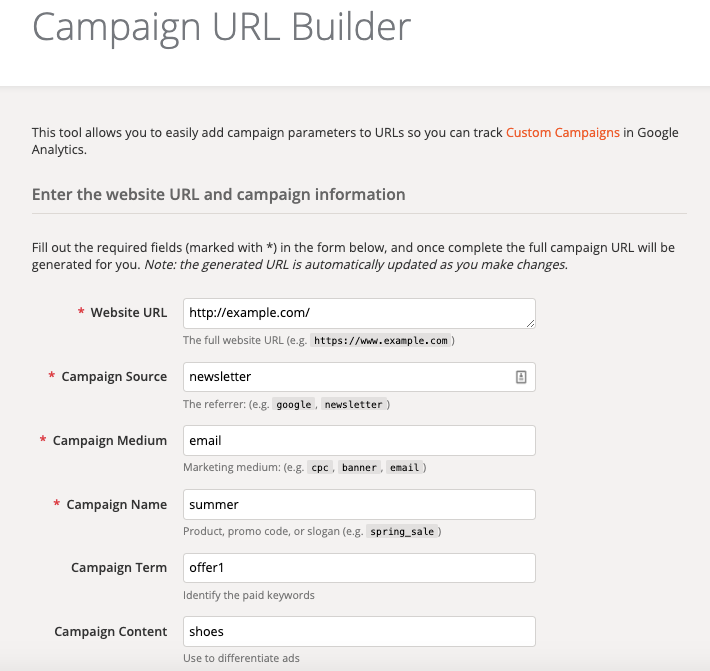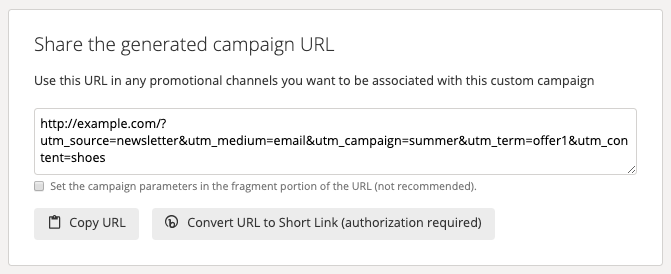What are UTM parameters and how to use them to track your online marketing efforts
Do you know which social network is bringing you the most traffic? Or which exact tweet or Instagram post sent the most leads to your site this month?
What about how much traffic and revenue you earned from your last email marketing campaign?
If you don’t measure the results you’re getting from your online marketing efforts, it’s difficult to know what to do next to improve and grow your business.
Sure, you can use the built-in analytics in your social networks as well as Google Analytics to measure the results. But if you want a little extra information than what your social media and website analytics offer, then you need to leverage UTM parameters.
‘UTM parameters’ might sound technical and complicated, but they’re very simple and easy to use to track your marketing performance.
In this post, we’ll explain what UTM parameters are and how you can use them to get a clearer insight into your marketing performance.
What are UTM parameters?
UTM parameters, also known as UTM tracking codes, are bits of text code that you can add to a link to track its performance. This will give you access to important data about your site’s visitors like where they came from and how they interacted with your content and website.
Here’s an example of what a UTM tracking link looks:
http://example.com/your-page-title/?utm_source=instagram&utm_medium=social&utm_campaign=contest
As you can see, it starts with the link you want to share (in this case, http://example.com/your-page-title/ ). The part that follows the ‘?’ is the UTM code, which is made up of several UTM parameters: source (Instagram), medium (social), and campaign (contest).
Why should you use them?
Tagging your links with UTM codes can help you to track the performance of each link you share on your social networks or in your emails and ad campaigns.
You can use them to track general information, like how much traffic you’re getting from Facebook, or which ad, link, button users clicked most to get to a page on your website.
You can also use them to track the fine details, like how much revenue you earned from your last email or a specific campaign on Instagram.
This allows you to evaluate which channels are most effective, and what type of content best resonates with your target audience.
What can you track with UTM codes?
There are five different UTM parameters. The first three – source, medium, and campaign – are recommended for tracking all types of links, while the final two – content and term – are optional as they’re most often used for tracking paid ad campaigns.
Let’s explain what each UTM parameter means.
- utm_source – This helps track where your traffic is coming from. For example, if it’s an email campaign, you can add “newsletter” as a source. If it’s a social network, then you can add Facebook, Twitter or Instagram as a source.
- utm_medium – This refers to the channel or the type of traffic you want to track. It can be social media, email, blog, ad.
- utm_campaign – This is the name of your campaign and it’s useful because it makes it easier to differentiate from other campaigns you’re running.
- utm_term – The ‘term’ parameter is mostly used for paid ad campaigns. It allows you to identify the keyword used to trigger the ad. You can also use it in email marketing to identify individual links and can work like a link text summary (e.g. offer1, offer2).
- utm_content – Also most commonly used for ad campaigns. You can use it to mention the size of the banners for example or whatever other detail can help you to differentiate and make sense of the data.
Here’s how a complete link with UTM parameters looks:
http://example.com/your-page-title/?utm_source=newsletter&utm_medium=email&utm_campaign=summer&utm_term=offer1&utm_content=shoes
How to add UTM parameters to your links
To add the tags to your links, you can either do it manually or use a tool like Google’s Campaign URL Builder (recommended).
- Manually
There is nothing technically complicated about UTM codes. However, if you’re not familiar with writing code or if you’re not very careful, you can easily make a mistake.
The last thing you want is for people to click your link and get redirected to a different page than the one you intended or to get a 404 not found error message. That’s why we don’t recommend writing the UTM codes by hand.
- Google URL builder
Google’s Campaign URL Builder makes is extremely easy to create links with UTM tracking codes.
All you need to do is to fill out a few fields and the tool will automatically generate the URL which you can then add to your emails, social media posts or ads.
Here’s how it looks:

Simply enter the web address of your website or the page you want to share. Then enter the ‘source’, ‘medium’ and ‘name’.
As we previously mentioned, ‘term’ and ‘content’ are optional, unless you’re running an ad campaign, in which case it’s useful to fill out those two fields as well.
After you add your desired parameters, scroll down to see the URL that the tool has generated:

Now all you need to do is to click the ‘Copy URL’ button and then paste it into your social media post, email newsletter or ad campaign.
Another easy way to tag your campaigns is to use an email marketing tool that is connected/ integrated with Google Analytics.
Best practices
Before you start building and adding UTM tracking links to your emails, social media posts and ad campaigns, there are a few important things to keep in mind.
Use a consistent UTM naming convention
If you sometimes use “facebook” and other times “fb’ to name your source, it’ll make it difficult and time-consuming to navigate through the data in Google Analytics, and know which is which.
So before you start with UTM codes, make sure you create a document where you write down the exact names you want to use for common parameters. For example, for links shared on Facebook, you can specify to always use “facebook” for the utm_source and “social media” for the utm_medium.
This will make it easier to keep track of all the data.
Stick to lowercase
UTM codes are case sensitive. This means that ‘Facebook’ and ‘facebook’ will be tracked separately, which can make your analytics a mess and the information more difficult to find and analyse.
That’s why we’d recommend sticking to all lowercase in your UTM links.
Use plain language
You don’t want to have to decipher your UTM codes and waste time figuring out what you were trying to track. That’s why it’s best practice to use simple, easy to understand names so that you can immediately figure out what each code means.
Use a link shortener
UTM tracking links can get long, especially if you’re running ad campaigns where you need to add extra parameters. With a link shortener like Bit.ly, you can turn a lengthy link into a more shareable and not so scary URL.
Check your links
It doesn’t matter if you write the UTM codes manually or if you use Google’s URL Builder to generate the links. You should always check your final links to ensure they work properly.
How to gain analytical insight with UTM codes
UTM parameters collect data to feed into Google Analytics (GA). This means that you’ll need to sign up for a Google Analytics account, if you haven’t already, before you start using UTM parameters.
Check out our beginner’s guide to Google Analytics to learn how to set it up.
Now you’ll be able to use Google Analytics to see where you traffic is coming from, how your channels and campaigns are performing, and even which links your visitors are clicking to land on your site.
How? Simply go to Acquisition -> Campaigns and Acquisition -> Source/Medium. This is where you’ll be able to get more information about your traffic, such as how much traffic you got from each link/ source, as well as other useful insights such as what the bounce rate is, how many pages were viewed per session on average, how much time visitors spent on the site, etc.).
Wrapping up
UTM parameters are useful to quickly and accurately see where your visitors come from, what links they clicked to land on your site and how they interact with your content, once on your site.
Gaining access to this valuable information can help you to determine whether your online marketing efforts are paying off, and what you can do to improve.
